#Ann-Margaret photography
Explore tagged Tumblr posts
Text

anonymous, c. 1981
#mgs#ocelhira#id in alt text#inspired by studio 54 type polaroids. not where they are but they are in the club#i liked the black and white a lot but imagine ocelot with the red eyes from color flash photography#also i watched liquid sky yesterday and can i just say. anne carlisle as jimmy?? (and also margaret. hi :). but for our purposes here)#huge influence on my gap years ocelot#what a strange movie though. i really liked it but look up content warnings#revolver ocelot#kazuhira miller
78 notes
·
View notes
Text

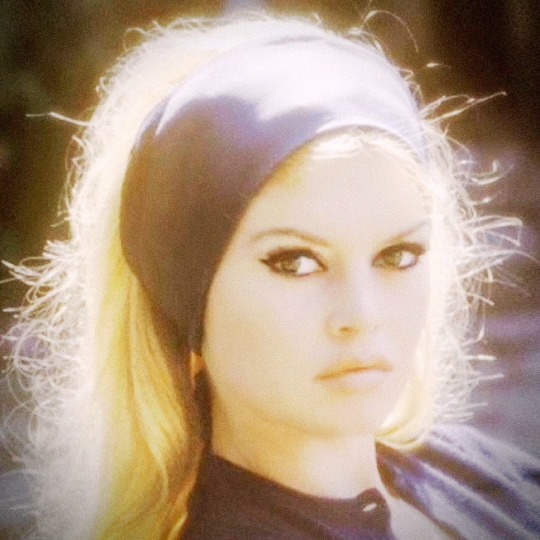

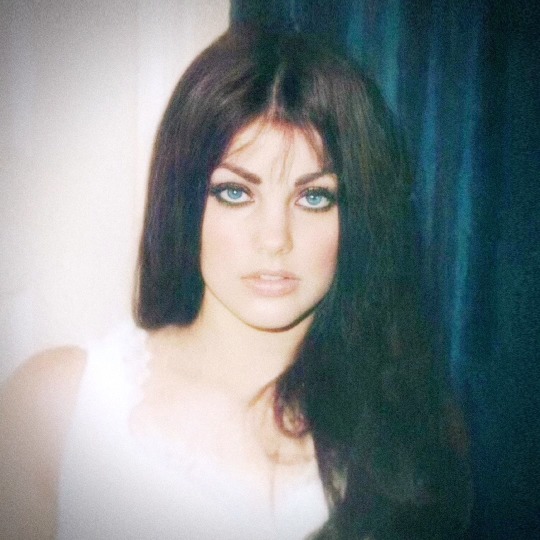
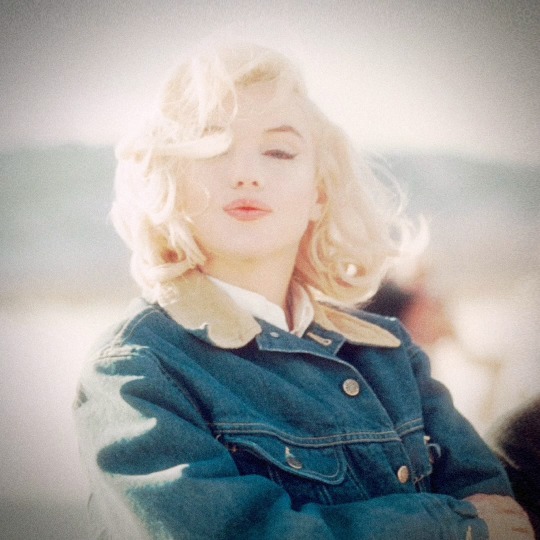
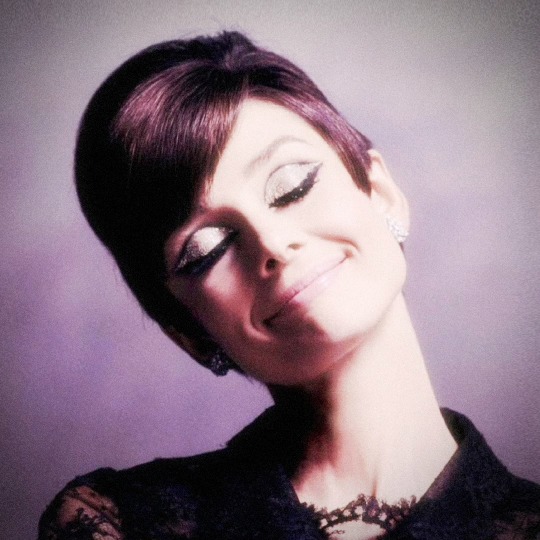


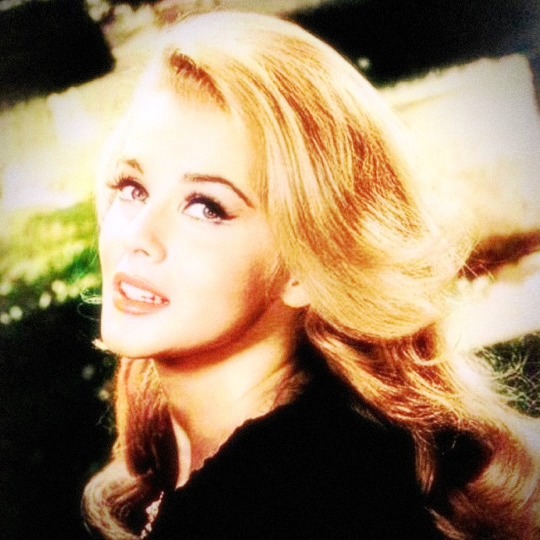
60's actresses icons
Like or reblog if you use
#sharon tate#bridget bardot#ewa aulin#priscilla presley#marilyn monroe#audrey hepburn#barbara bouchet#virna lisi#ann margaret#60's#Vintage#1960s#1960s films#retro#Icons#photoshoot#photography
81 notes
·
View notes
Text



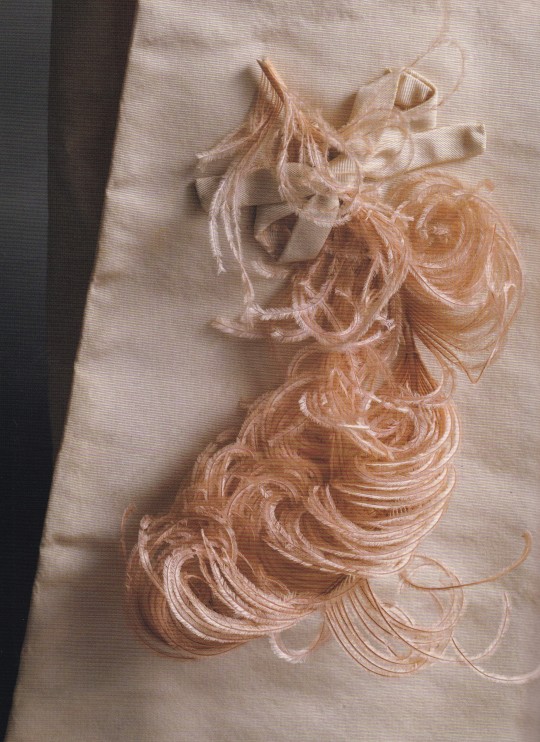
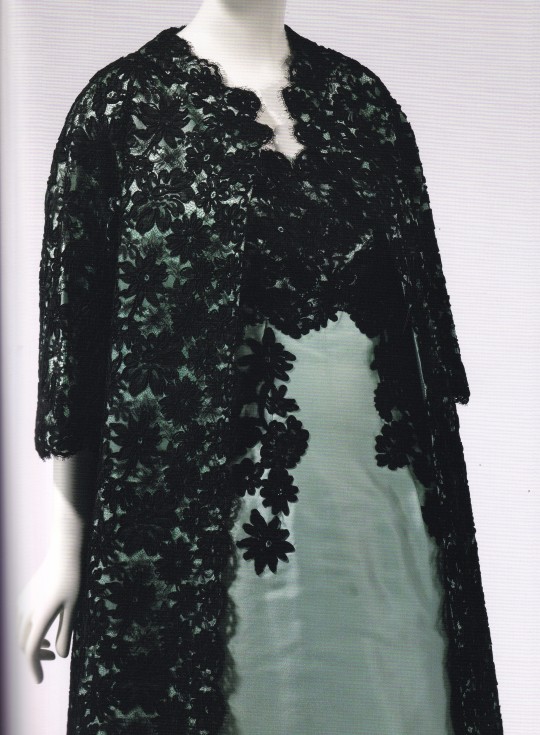

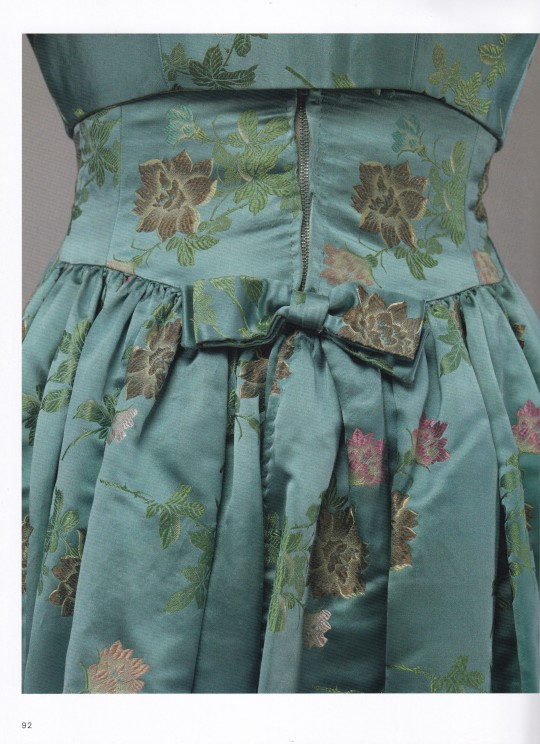
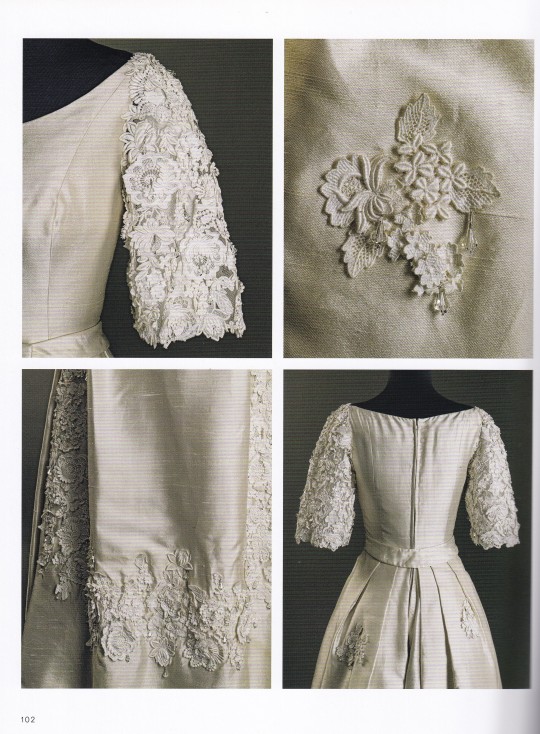
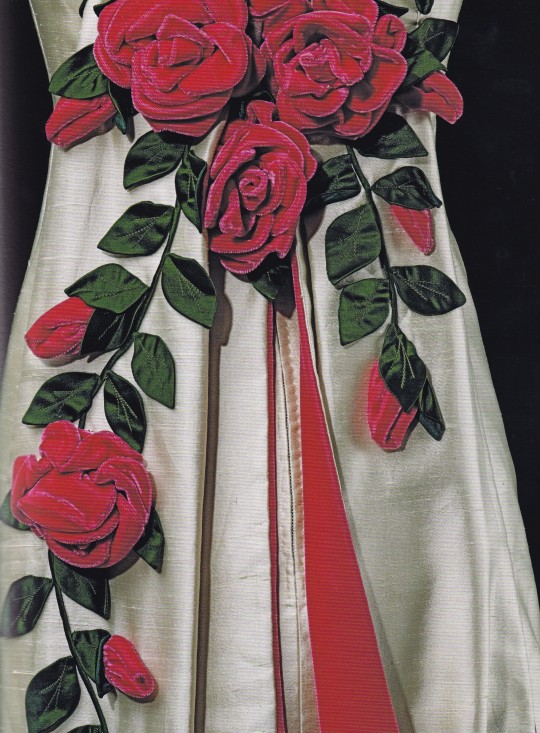

Ann Lowe
American Couturier
Elizabeth Way
Contributions by Heather Hodge and Laura Mina and Margaret Powell and Katya Roelse and Katherine Sahmel
Rizzoli Electa, New York 2023, 208 pages, 23.6x28.68cm, ISBN 9780847873142
euro 60,00
email if you want to buy [email protected]
The definitive illustrated volume on the work and life of Ann Lowe, a consummate couturier who designed lavish evening and bridal gowns for members of America’s social registry, a Black woman working hard behind the scenes whose important legacy has remained underappreciated—until now.
At the height of her fashion career, Ann Lowe’s luxurious and opulent evening gowns and bridal wear were sold in upscale department stores across the country. At various times Lowe owned salons on Madison Avenue. She made Jackie Kennedy’s wedding and bridesmaids’ dresses, but, upon arrival at the Auchincloss estate on the big day, the butler directed Lowe to enter via the service entrance (she refused). Throughout her lifetime (c. 1898–1981), her major contributions to American style were unrecognized.
Vivid new photography of Lowe’s couture gowns—including lush details of her exquisite handwork and signature floral embellishments—accompany essays that explore the trials and achievements of Lowe’s life, contextualize her work within fashion history, profile Black designers whose work reflects her influence, and offer a behind-the-scenes look at the extraordinary efforts to preserve Lowe’s gowns.
25/04/24
#Ann Lowe#american couturier#Jackie Kennedy's wedding dress#american style#floral embellishments#fashion books#fashionbooksmilano
13 notes
·
View notes
Text
🧡👑 Jensen Ackles | Honolulu Convention, 2023 ☀🔥
Part 2.
📸: KeepFrmDrowning, barr_alicia, LizNLarsonPhoto, daitaikueru, heyitskayla, LisaMichellePhotos, Alannah Margaret Ann Photography (Twitter)
Edited by me: @deansraspberrypie
🍰 Tag list: @avanatural @undisputedchick2 @jranutter @fortheloveof-jackles @kazsrm67 @muchamusedaboutnothing @breath-of-snow-and-ashes @bluedragonflylady @mrsjenniferwinchester @unabashed-lover-of-fictional-men 🥧
#jensen ackles#honcon2023#simple man#jensen ackles edit#jensen ackles video#deansraspberrypie edit#deansraspberrypie video#the most handsome man#he looks absolutely gorgeous#drp
8 notes
·
View notes
Note
10, 13 and 22 from the historical ask game? :)
Thank you for the asks! :)
10. Pieces of art (paintings, sculpures, lithographies, ect.) related to history you like most ( post an image of them)
Oh, I could not choose! A lot of things count as art coming to think of it, among them, the mentioned 'classic' artistic disciplines aside, film making, photography, decoration on or the design of everyday objects, textile or jewellery-making and -design, architecture, etc., etc.
Of course, any concept of what is (a work of) art should include pieces produced by people who were not professionals making a living from creating something we might classify as 'art'.
One piece I particularly enjoy I am afraid I cannot show, as it is property of an archive and I only have a representation of it printed at a comparatively small scale in a book. It is a sketch, or rather, caricature, of Margaret Graves (1728-1808), and to date the only visual portrayal of her I could find. The drawing was made by her niece Elizabeth Simcoe's best friend, Mary Anne Burgess, and depicts an elderly lady with a narrow face and pointy chin almost drowning in a tall and preposterously poofy parody of the curled hairstyle fashionable in the later 1780s and 90s that is crowned with an ornamental plumed cap. Margaret was quite a character, and though little of her face is visible among her big hair (that is definitively full of secrets!), it shows in Mary Anne Burgess's artistic impression of her.
Because I want to show something regardless, have these 18th century children's drawings exhibited at Wesenstein Castle, Saxony:



13. Something random about some random historical person in a random era.
Austrian emperor Franz Joseph I of Austria was pinching pennies so effectively that he rarely bought or wore new clothes. Sometimes, his confidante Katharina Schratt and his valet would secretly remove items on which too much wear was visible, and replace them with a newly commissioned one of the same cut, colour and fabric, so the emperor wouldn't notice.
22. Random historical fact about the place you are at the moment.
There are two legends about two distinctly different hedless horses. They're not related to each other.
6 notes
·
View notes
Text

By Royal invitation Inside Prince Charles & Camilla’s London home
Australian Women’s Weekly NZ | Published 17 July 2019
PHOTOGRAPHY by HUGO BURNAND
Standing outside the “Birthday Gates” of Clarence House, it’s impossible not to be reminded of the Queen Mother. As a child growing up in England, I remember crowds gathering every year outside these big black gates in Stable Yard Road, hoping to greet the former Queen Elizabeth who would step outside her front door on August 4 to receive birthday wishes from the people. It was one of those peculiarly British rituals which underlined the public affection for the royal family and started in 1970, continuing until Her Royal Highness’s final birthday at the age of 101. The custom resulted in the current moniker for the gates, and as The Australian Women’s Weekly is welcomed inside for a privileged private tour of the house and gardens, currently the London home of Prince Charles, his wife, the Duchess of Cornwall, and a privileged swarm of London’s bee population, I can’t help but notice reminiscences of the Queen Mother everywhere.

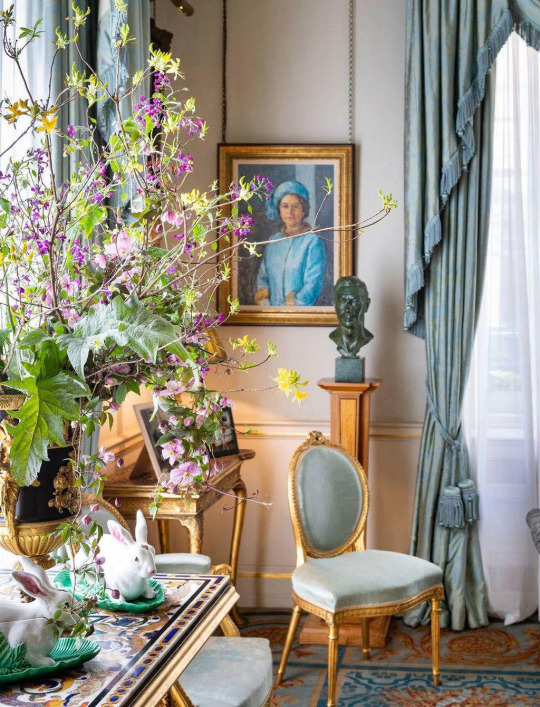
Clarence House, nestled in a perfect oasis of calm just behind The Mall, is a unique royal residence which I suspect holds a special place in the hearts of all the family who have lived here. It was built in the 1820s for the Duke of Clarence, who later became King William IV, and has been altered and refurbished over the centuries for seven very different royal occupants.


Prince Charles became Heir Apparent to the British throne at the tender age of three when he was living at Clarence House, and all of a sudden his childhood was turned upside down. Together with his sister Anne, their cosy world moved across Green Park to the vast corridors of Buckingham Palace. His mother was no longer a princess, but Queen Elizabeth II, at just 25.
It must have been quite a shock, for even though Clarence House is an historic royal residence next to St James’s Palace, the one-time principal residence of the monarch, it has the warmth and aura of a family home, which for a time Princess Elizabeth, The Duke of Edinburgh and their two children enjoyed immensely. It’s easy to imagine Prince Charles learning to walk here, toddling along the corridors and into the gardens with the corgis scampering through.
His grandmother, the Queen Mother, lived here for 49 years after her daughter became Queen, and for some of that time Princess Margaret – before the Princess married and moved to Kensington Palace – lived here with her mother. There were glittering cocktail parties and picnics on the lawns, and the Queen Mother was a huge patron of contemporary art, much of which hangs on the walls. Then, following the Queen Mother’s death in 2002, Prince Charles moved back in with his sons, and in 2005 was joined by his wife Camilla.
Today the residence, which is one of the last remaining aristocratic town houses in London, is not just the Heir’s London home, which he and his wife live in for around 70 days a year. It’s also the brains trust for his court, with offices for the Prince’s household. The Prince and Duchess have private rooms upstairs, while the downstairs living areas are used to entertain heads of state, foreign royalty and guests from all walks of life. Here the Prince of Wales recently hosted President Trump, and past visitors read like a who’s who of world figures, including the Dalai Lama, who calls the Prince, “very close, best of friends” and wandered hand in hand with HRH around the gardens. The magnolia spectrum that the Dalai Lama planted in 2008 still holds pride of place.
Part of the appeal for dignitaries, I suspect, is the homeliness of Clarence House, for even though it is filled with intriguing historic artefacts, furniture and paintings, and is the home of the future King of the United Kingdom, you really do feel you are being invited into a family sanctum. There are family photographs everywhere, especially of His Royal Highness’s sons and grandchildren, and behind every book, every object, is a story that is very personal.
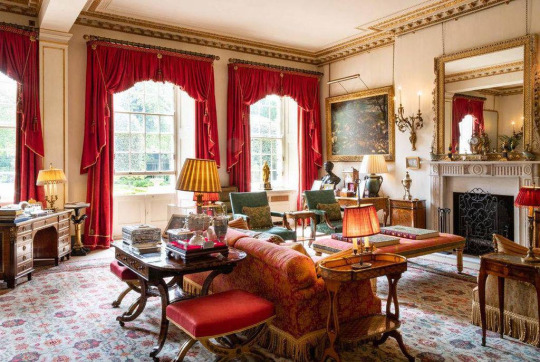

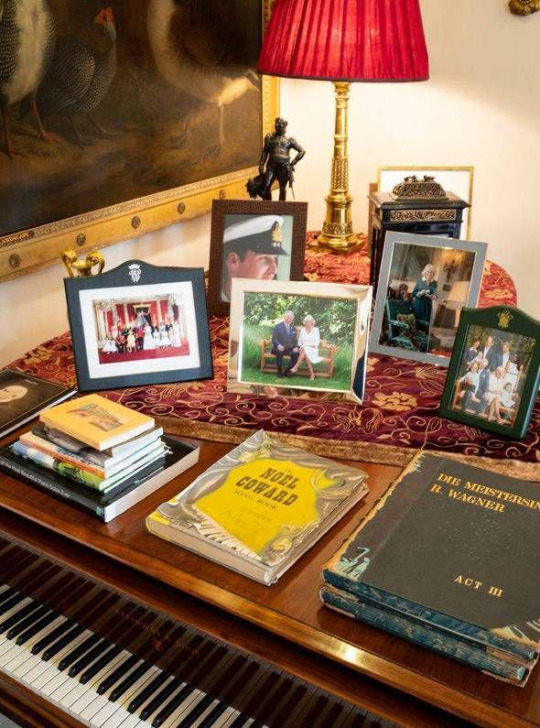


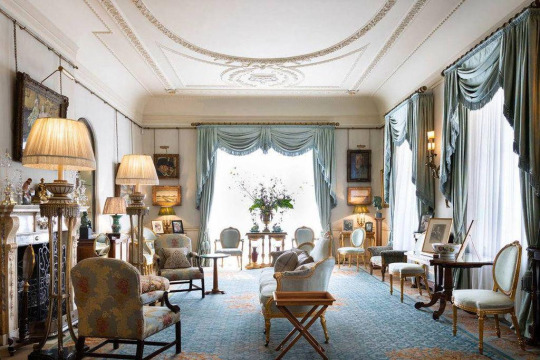
I start my tour through the main front door into the entrance hall, where there are wooden toys that Prince Charles and Princess Anne played with, including an old-fashioned baker’s trolley and a wheelbarrow. But I can’t take my eyes off an extraordinary pedestal clock. This magnificent eighteenth-century piece with three painted dials plays tunes and features hands with crowns on their tips. It was a wedding gift to Prince Charles’ grandparents – the then Duke of York who became King George VI and Lady Elizabeth Bowes-Lyon – from the citizens of Glasgow in Scotland.
As I soon discover, the house is filled with gifts and many are from Australia. Some are permanently on display, like the four paintings in the Lancaster Room – first room on the right – and other items Prince Charles has kindly brought into the house today from the Royal Collection or Buckingham Palace, especially for my visit. The paintings are by Melbourne artist Norma Bull, who came to England in 1939. “She was an unofficial war artist in London and would just walk out after bombings and literally draw and paint what she saw,” a member of the royal household tells me. These were particularly poignant for Queen Elizabeth, who with the King defiantly stayed in London throughout the Blitz, personally visiting the capital’s bombed out streets. “In 1947 there was an exhibition of Bull’s paintings and Queen Elizabeth bought nine, among them these four. Norma Bull then gifted another two.”
The royal family’s connection to Australia is deep-seated, and the Prince was particularly keen for The Australian Women’s Weekly readers to see a very special pair of booties, which usually sit in the nursery corridor in Buckingham Palace. They were made for his mother when she was baby and presented to his grandmother, then the Duchess of York, by Indigenous Australians in Victoria when Her Royal Highness toured in 1927. They’re made from shells, velvet and sand and are exquisite.
Another souvenir from that visit is a small rock studded with gleaming nuggets of gold. The Prince’s grandmother’s handwritten note has also been saved: “Gold Bearing Quartz from Ballarat 29.4.27”.
In honour of my visit there is a display of Australian native flora in the dining room, and the air is rich with eucalyptus. Suitably, the silver wine coolers either side are a wedding gift, “to the Duke of York (later King George VI) on his marriage to Lady Bowes-Lyon, April 26, 1923, from Australians in London.”


When Prince Charles hosts dinners here, I am told he likes to sit in the middle rather than at the head of the table so he can talk to everyone, and he also likes to face the stunning painting of his grandmother as a young queen that hangs above the fireplace which is lit in winter. The painting is by Augustus John and is actually an unfinished work. “When he was asked to come to Buckingham Palace to paint Queen Elizabeth he was overcome and couldn’t look Her Majesty in the face, hence the detail on the dress. They provided him with a drink and even had a string quartet play next door to try to calm him down, but it really wasn’t working. When the Blitz started, they decided that they would finish the sittings because it was too dangerous. The artist rolled up the canvas and took it back to his studio. Then in the 1960s, there was a retrospective of his work and the Northern Shipping Line bought the painting as a gift for the Queen Mother as she was then, who was launching a ship for them. She absolutely loved it.”

The Queen Mother was a fan of preparatory sketches, finding them often to have more vibrancy than the finished work, and there are many throughout the house.
Each of the downstairs rooms has its own unique personality. The pale blues of the Morning Room reflect the Queen Mother’s racing colours, while the rich reds, golds and greens of the Garden Room echo the colours in a fine wall tapestry given to Queen Victoria by Emperor Napoleon III. There are small doors beneath the windows in this room, which I’m told were opened to let the corgis run into the garden.
But most notable are two musical instruments – a golden harp made especially for the Prince of Wales which is played by the royal harpist, and a Steinway grand piano which used to be in the Royal Lodge in Windsor and on which Princesses Elizabeth and Margaret learned to play. Noël Coward regularly played on this piano and was a frequent visitor to Clarence House. On top is one of his songbooks, in which the legendary playwright and composer has written, “To Her Majesty Queen Elizabeth, the Queen Mother, from Noël Coward”, and an indication of the sort of parties held here is a wine glass stain on the opening page!
One room which very few visitors see is on the third floor and holds special significance for Australia. It is called “The Quiet Room”, panelled in jarrah wood, a wedding gift to the Queen and the Duke of Edinburgh from the Australian people. As I walk into this room there is a rich smell of the wood, and on the wall is a painting by James Ranalph Jackson of Australian bushland, presented to the Queen Mother by the government and people of NSW in February 1958.
The gardens at Clarence House have been remodelled by Prince Charles, adding a formal area in memory of his grandmother, laid out to His Royal Highness’s own design by members of The Prince’s Foundation School of Traditional Arts. The trees in the formal part of the garden have been topiaried into the shape of the Queen Mother’s parasol. While elsewhere, the Prince has introduced long grass where wild orchids grow and a vegie patch, which serves the house. On my visit crops of kale, spinach, carrots, broad beans, runner beans, leeks and lettuce burst through the soil.
In 2017 the Prince installed two beehives, and honey is harvested from the hives at Clarence House once a year. There is also a bee hotel, a curious collection of bamboo tubes fixed to the wall. “Beehives are for colonies but not all bees are in colonies, a lot of them are solitary and in the winter they find it quite difficult to find somewhere to be warm,” explains a household spokesperson. “The bee hotel has bamboo shoots with nooks and crannies for bees and insects to shelter and have a home.”
The gardens are also used for medal ceremonies and parties, including the Elephant Family masked ball to raise funds for the foundation, set up by the Duchess of Cornwall’s late brother Mark Shand.
And every year the Duchess invites children from a children’s hospice to decorate the Clarence House Christmas tree. “It is a lovely event that really sums up the joy of this house,” says a member of the household.
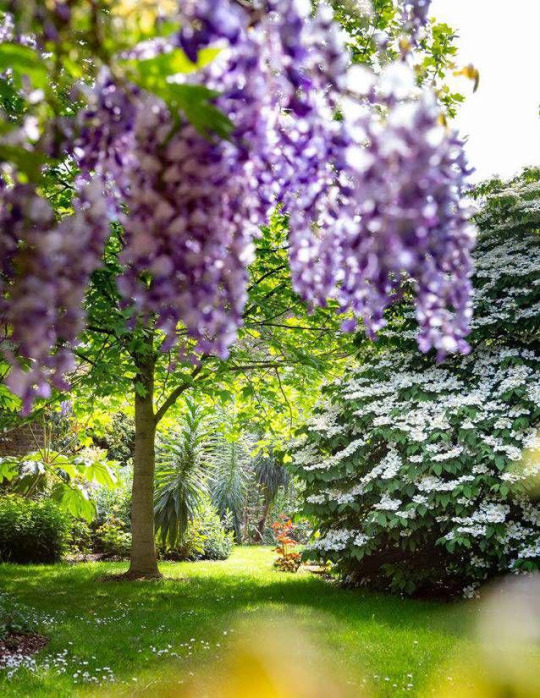
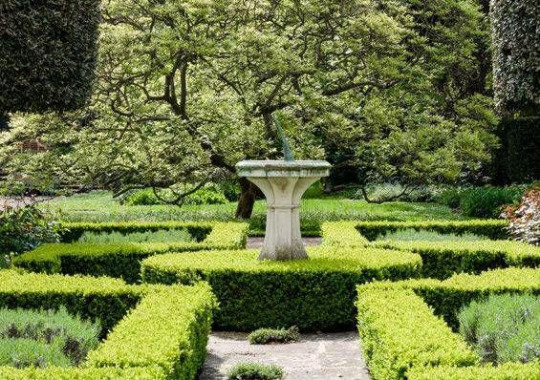




From Down Under




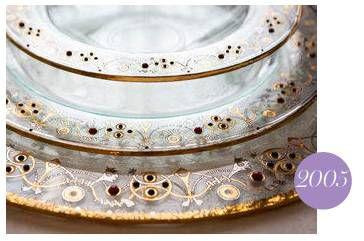
25 notes
·
View notes
Text

June 2023 Wrap Up
This year just keeps flying by. As evidenced by the fact that I didn't manage to get this posted until the end of July. Oops..
Books Read: 13
But look at how much I read! Part of it is because I decided that I just needed to reread the Twilight Saga for no reason. 🤷♀️ I ultimately really enjoyed it even though I gave most of them 3 stars (all but Breaking Dawn, that book is just...not it). They're so fun, but my god am I concerned about the messages that were getting pushed onto teenage Elizabeth with that series. My favorite new read was Dark and Deepest Red by Anna-Marie McLemore, a wonderful retelling of "The Red Shoes." My least favorite was Godiva's Ride, which I read for my dissertation. There was so much weirdly incorrect information in it. The author said that Mr. Rochester from Jane Eyre was married to Blanche Ingram. 😬 So yeah, not a good time. Books marked with ® are rereads.
Godiva's Ride: Women of Letters in England, 1830-1880 - Dorothy Mermin - 2 stars
A Wild Winter Swan by Gregory Maguire - 3.5 stars
Twilight by Stephenie Meyer - 3 stars ®
Ariel by Sylvia Plath - 3 stars
Outside the Pale: Cultural Exclusion, Gender Difference, and the Victorian Woman Writer by Elsie B. Michie - 3 stars
New Moon by Stephenie Meyer - 3 stars ®
Salem Chapel by Margaret Oliphant - 4 stars
A Poetry Handbook: A Prose Guide to Understanding and Writing Poetry by Mary Oliver - 4 stars
Eclipse by Stephenie Meyer - 3 stars ®
The Death Notebooks by Anne Sexton - 3 stars
Breaking Dawn by Stephenie Meyer - 1.5 stars ®
Dark and Deepest Red by Anna-Marie McLemore - 4 stars
How to Suppress Women's Writing by Joanna Russ - 4.5 stars ®
On Tumblr:
Not much here, huh? I need to get better about posting actual content. And we won't even speak about the fact that there's nothing from the blog (again).
May Wrap Up
Cat Photography
On YouTube:
But there's plenty here! A shelf tour, a book haul, a Fairy Tale Friday, and the final video on what I taught for my Brit Lit class!
What I'm Teaching in British Literature III: Postmodernism
Bookshelf Tour: Fantasy
May Wrap Up - 5 books
March to May Book Haul
Fairy Tale Friday: A Wild Winter Swan by Gregory Maguire
Currently Reading 6/22/23
July TBR - Jane Austen July & More!
Who Are My Favorite Authors?
3 notes
·
View notes
Photo



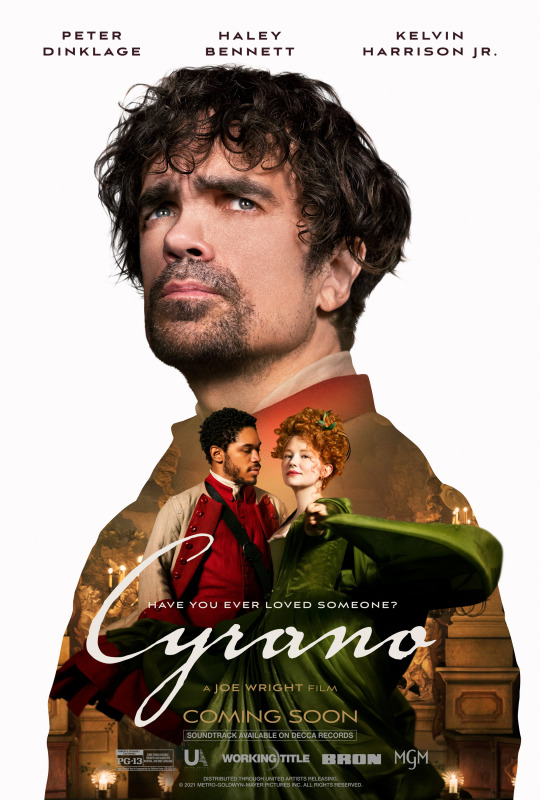


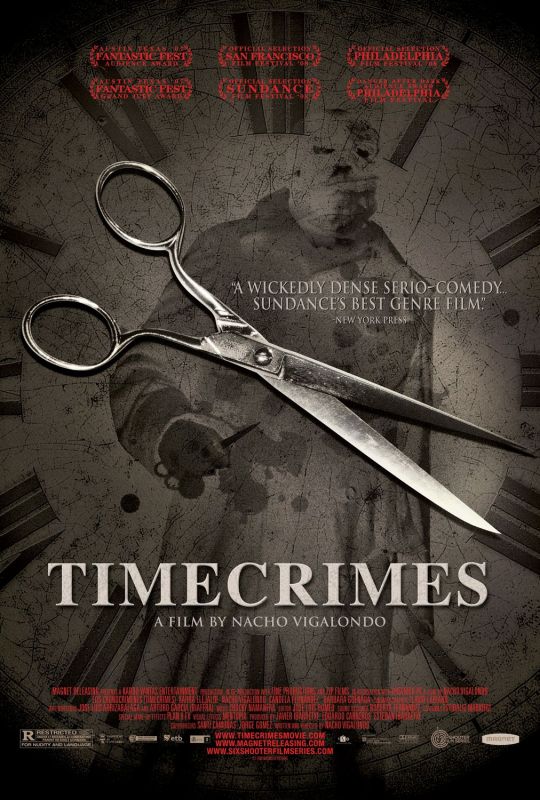
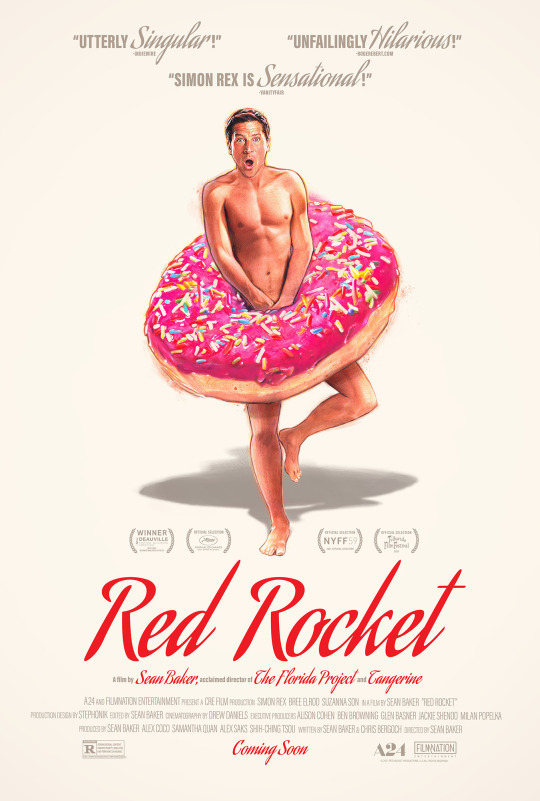


My Best of 2022: Non-2022 Films
My Best of 2022 is a series of annual lists in which I pick the best of the best from 2022, all leading up to my official picks for My Top 10 Films of 2022.
Only a handful of these even belong on any sort of ‘best of’ list. But, as I only saw somewhere like 20 first-time non-2022 films, here we are. Oh well...
1. Drive My Car (Ryûsuke Hamaguchi, 2021)
A staggering cinematic achievement. How not one second of this three-hour film is anything less than enrapturing is a true testament to the power of humanity in film. All aspects work together beautifully, here, to bring a refreshing, heartfelt, emotionally cathartic story of mourning and the connection between life and art. The source material lays a rock-solid foundation upon which Ryûsuke Hamaguchi & Co. build a quietly compelling piece of cinema. With the Academy’s love for this, I really see no logical reason how Hidetoshi Nishijima wasn’t nominated in the Lead Actor category over Javier Bardem, he was magnificent.
2. The Raid: Redemption (Gareth Evans, 2011)
Oh… damn… badass action flick is badass. How the hell did I not see this sooner?!?
3. The Cincinnati Kid (Norman Jewison, 1965)
I’ve long loved Rounders, so its really strange it took me this long to see this one. McQueen is solid, but Robinson steals the show. Jewison’s direction sets a fantastic pace. And then there’s Ann-Margaret… yikes!
4. Cyrano (Joe Wright, 2021)
That “Wherever I Fall” sequence, though... That scene tore my heart right out of my chest. Wow.
The rest of this is quite phenomenal, as well. Dinklage’s performance was stellar, and despite his singing voice not being the strongest (especially when paired against Haley Bennett’s), his numbers made for emotionally overwhelming pieces. On the technical side, this was an all-around feast, boasting production design, costumes, cinematography - not to mention the abundance of music not singled out - that were nothing short of beautiful.
5. Kodachrome (Mark Raso, 2018)
Holy shit… Elizabeth Olsen is so effortlessly gorgeous, here. Damn. The beginning features a giant, don’t-fucking-do-it move on Sudeikis’ part when he gives the venue security guard attitude for telling him he needs to have his pass on, and that seriously annoyed me, so the fact that I ended up liking his character at all throughout the rest of the film is some solid character work on his part. Ed Harris was unsurprisingly solid. Overall not the best, most original or insightful film of its kind, but the cast is really good and living in both the live music world and the photography world as I do, there was a bunch here for me to like. Especially Elizabeth Olsen, though. Seriously… Damn.
6. The Shop Around the Corner (Ernst Lubitsch, 1940)
James Stewart really is one of my all-time favorite actors. He’s just always so damn good. I also love me some Lubitsch, yet for some reason I have so many blind spots with him. Anyway, I know we live in completely different times, but even looking through the scope of the time, that ending seemed a bit forced. Still a delightful film overall, but she must’ve been really desperate to let the shit he pulled go.
7. Timecrimes (Nacho Vigalondo, 2008)
A cool, little contained time travel thriller. I’d almost rented this dozens of times back when I worked at Blockbuster Video, but never pulled the trigger. It’s weird and twisty and surely ridden in plot-holes, but damn was it an enjoyable ride.
8. Red Rocket (Sean Baker, 2021)
I was surprised by how much I actually ended up liking this despite totally despising our lead character. There’s a white-trash charm to it, I guess? Or, at the very least, a clear sense of authenticity that pulls you into the film effectively. I’m still not a fan of Baker’s tendency to use non-professional actors, though. It’s distracting in the wrong way.
9. Parallel Mothers (Pedro Almodóvar, 2021)
I don’t really have a lot to say about this one. Cruz was magnificent, and more than earned that Oscar nod, but other than that I had trouble getting emotionally invested, and was therefore left cold by the end.
10. The King’s Man (Matthew Vaughn, 2021)
It has its moments, and Ralph Fiennes is awesome, but mostly it left me wanting for more. The first of these movies was so wonderfully over-the-top that the few scenes that come near that level, here, just don’t quite satisfy.
Enjoy!
-Timothy Patrick Boyer.
Next Up: Assorted (Animated Feature, Foreign Film, Editing, Screenplay, Etc.)
More of My Best of 2022...
#film#movies#best of 2022#non-2022#lists#movie#mybestof2022#drive my car#the raid#the cincinnati kid#timecrimes#red rocket#parallel mothers#the king's man#kodachrome#the shop around the corner#cyrano
6 notes
·
View notes
Text
Speaking as someone who studied at an International Baccalaureate school in Vietnam, this book was covered every year by my school’s 8th grade English classes. At no point did any student or their guardians complain about the material being inappropriate for 13 year old readers and the book was available to be checked out by anyone in middle school or higher from our school library. In my opinion it was a very valuable read and my class had discussions that proved very enlightening for some students.
From my perspective I don’t think I could take seriously any arguments for the banning of these that are based around protecting children inappropriate material because honestly, if it can be found in a library, there is no doubt in my mind that it can be found online. Quite frankly though, I never saw a single classmate shy away from the reading material because of goriness or something similar.
Other media my school covered:
Inside Out and Back Again by Lai Thanh Hà (A free verse poetry novel from the perspective of a young girl fleeing from South Vietnam to the US near the final days of the Vietnamese-American War, based on Lai’s own experiences)
The Handmaid’s Tale by Margaret Atwood (The famous dystopian novel set in a theonomic patriarchal totalitarian state in the US New England area where women exist without individual rights. Adapted into the 2017 Netflix series of the same name)
Persepolis 1 & 2 by Marjane Satrapi (A graphic novel memoir about Satrapi’s life, first in Iran and in part 2 Vienna, during and after the Islamic Revolution. Adapted into an animated film in 2007)
Lemonade by Beyoncé (The 2016 film and visual album, focusing on the visual aspects instead of music or lyrics)
Multiple speeches by 45th US president Trump made during his 2016 presidential campaign
Photography by Phillip Jones Griffith taken in Vietnam during the Vietnamese-American War
The World’s Wife by Carol Ann Duffy (A poetry collection rewriting and interpreting famous myths and stories by focusing on the gender relations around the main figures) (I personally would not recommend it as I believe Duffy misinterprets and mangles the original messages of some of the stories in order to achieve her narrative)
The Crucible by Arthur Miller (A play written in 1953 about the Salem Witch Trials as an allegory for the ongoing issue of McCarthyism which Miller was a victim of)
The Sorrow of War by Bảo Ninh (A novel telling the story of a North Vietnamese soldier, told non-chronologically, as he reminisces about his loss of innocence, love, and the anguish of war. Was banned in Vietnam until 2006)
Tonight I gave Art Spiegelman the National Book Awards Medal for Distinguished Contribution to American Letters. And we're both being banned. Some of you may think this is a good thing because you don't like my books or you don't care for Maus. But I guarantee that there are books you love on the banned lists too. That's why libraries and librarians fight for their rights to have all the books on the shelves and for your rights to read them. And it's why I support them.
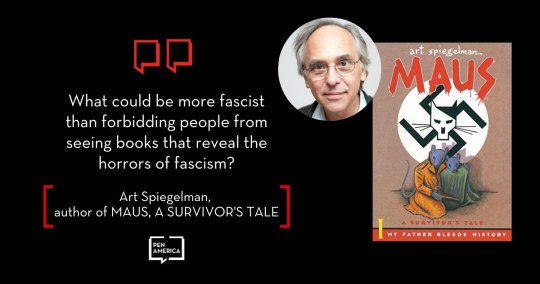
38K notes
·
View notes
Text
Women Photographers #PalianSHOW
Here are Photographers we've already written about. From the pioneers of photography to contemporary artists. Click on the picture to learn more about each and everyone of them! #PalianSHOW
Here are Photographers we’ve already written about. From the pioneers of photography to contemporary artists. Click on the picture to learn more about each and everyone of them! Julia Margaret Cameron (UK, 1815-1879) Frances Benjamin Johnston (1864-1952) Anne W. Brigman (1869 –1950) Grete Stern (1904-1999) Lola Álvarez Bravo (Mex, 1903 – 1993) Inge Morath (AT/USA, 1923 – 2002) Myra Albert…
0 notes
Text
Beverly is the perfect happy homemaker, along with her doting husband and two children, but this nuclear family just might explode when her fascination with serial killers collides with her ever-so-proper code of ethics. Credits: TheMovieDb. Film Cast: Beverly Sutphin: Kathleen Turner Eugene Sutphin: Sam Waterston Misty Sutphin: Ricki Lake Chip Sutphin: Matthew Lillard Detective Pike: Scott Morgan Detective Gracey: Walt MacPherson Scotty: Justin Whalin Birdie: Patricia Dunnock Carl: Lonnie Horsey Dottie Hinkle: Mink Stole Rosemary Ackerman: Mary Jo Catlett Mr. Stubbins: John Badila Betty Sterner: Kathy Fannon Ralph Sterner: Doug Roberts Carl’s Date: Traci Lords Marvin Pickles: Tim Caggiano Howell Hawkins: Jeff Mandon Father Boyce: Colgate Salsbury Mrs. Jenson: Patsy Grady Abrams Herbie Hebden: Richard Pilcher Timothy Nazlerod: Beau James Judge: Stan Brandorff Luann Hodges: Kim Swann Suzanne Somers: Suzanne Somers Gus: Bus Howard Sloppy: Alan J. Wendl Juror #8: Patricia Hearst Jury Forewoman: Nancy Robinette Rookie Cop: Peter Bucossi Policewoman: Loretto McNally Press A: Wilfred E. Williams Court TV Reporter: Joshua L. Shoemaker Court Groupie A: Rosemary Knower Court Groupie B: Susan Lowe Carl’s Brother: John Calvin Doyle Book Buyer: Mary Vivian Pearce Mean Lady: Brigid Berlin Police Officer: Jordan Brown Vendor: Anthony ‘Chip’ Brienza Flea Market Boy: Jeffrey Pratt Gordon Flea Market Girl: Shelbi Clarke Macho Man: Nat Benchley Dealer: Kyf Brewer Baby’s Mother: Teresa R. Pete Church Baby: Zachary S. Pete Doorman: Richard Pelzman Kid A: Chad Bankerd Kid B: Johnny Alonso Kid C: Robert Roser Joe Flowers: Mike Offenheiser Girl: Lee Hunsaker Burglar A: Michael S. Walter Burglar B: Mojo Gentry Mrs. Taplotter: Gwendolyn Briley-Strand Reporter: Jennifer Mendenhall Joan Rivers: Joan Rivers TV Serial Hag: Catherine Anne Hayes Lady C: Susan Duvall Press: Valerie Yarborough Kid: Jordan Young Camel Lips: Jennifer Finch Camel Lips: Suzi Gardner Camel Lips: Demetra Plakas Camel Lips: Donita Sparks Husband A: John A. Schneider Court Clerk: Lyrica Montague Eugene Sutphin’s Nurse (uncredited): Bess Armstrong Birdie’s Father (uncredited): Greg Coale Video Store Customer (uncredited): David L. Marston Stage Diver (uncredited): Kim McGuire Cop (uncredited): John Poague Club Kid (uncredited): Al Sotto Ted Bundy (voice) (uncredited): John Waters Film Crew: Art Direction: David J. Bomba Sound Re-Recording Mixer: Mark Berger Executive Producer: Joseph M. Caracciolo Jr. Thanks: Paul Reubens Original Music Composer: Basil Poledouris Writer: John Waters Production Design: Vincent Peranio Editor: Janice Hampton Producer: Mark Tarlov Supervising Sound Editor: John Nutt Thanks: Don Knotts Editor: Erica Huggins Director of Photography: Robert M. Stevens Associate Producer: Pat Moran Costume Design: Van Smith First Assistant Director: Robert Rooy Property Master: Brook Yeaton Art Department Production Assistant: Jeffrey Pratt Gordon Carpenter: Thomas Turnbull Thanks: Harry H. Novak Set Decoration: Susan Kessel On Set Dresser: Lianne Williamson Sound Editor: Ernie Fosselius Thanks: Arthur Machen Utility Stunts: G. A. Aguilar Sound Mixer: Rick Angelella First Assistant Director: Mary Ellen Woods Sound Editor: Frank E. Eulner Casting: Paula Herold Set Dresser: Michael Sabo Second Unit Director: Steve M. Davison Sound Editor: Robert Shoup Hairstylist: Kathryn Blondell Sound Re-Recording Mixer: David Parker Stunt Double: Cheryl Wheeler Duncan Assistant Makeup Artist: Janice Kinigopoulos Makeup Artist: Debi Young Makeup Artist: E. Thomas Case Post Production Supervisor: John Currin Assistant Property Master: R. Vincent Smith Music Supervisor: Bones Howe Draughtsman: Rob Simons Additional Hairstylist: Howard ‘Hep’ Preston Assistant Makeup Artist: Barbara Lacy Art Department Coordinator: Sarah Stollman Utility Stunts: Michael Runyard Unit Production Manager: Margaret Hilliard Hairstylist: Ardis Cohen Assistant Production Design: John Lindsey McCormick Makeup Artist: Betty Beebe Sound Recordist: Philip Rogers Producer: John Fiedler Secon...
#baltimore#court#dark comedy#evil mother#harassment#hit-and-run#housewife#infamy#motherly love#murder#obscene telephone call#perfection#perfectionist#protection#protective mother#satire#serial killer#suburbia#Top Rated Movies#USA
1 note
·
View note
Text
"SENSE AND SENSIBILITY" (2008) Review

"SENSE AND SENSIBILITY" (2008) Review
The year 2008 marked the fourth adaptation of Jane Austen’s 1811 novel, "Sense and Sensibility". First aired on the BBC, this three-part miniseries had been adapted by Andrew Davies and directed by John Alexander.
"SENSE AND SENSIBILITY" told the story of the two older of three sisters and their financial and romantic travails in early 19th century England. Elinor and Marianne Dashwood, along with their mother and young sister, Margaret; found themselves homeless and in financial straits following the death of their father. Their elder half-brother, John Dashwood, had promised their father he would financially compensate them, since the Norland Park estate was entailed to the male heir. Unfortunately, John possessed the backbone of jelly and allowed his venal wife Fanny to convince him into withholding any financial assistance from the Dashwood women. Fanny received a shock when her younger brother, Edward Ferrars, paid a visit and ended up becoming romantically involved with Elinor. Before their romance could flourish; Elinor, her sisters and her mother were forced to leave Norland Park. They settled at a cottage in Devon, owned by Mrs. Dashwood’s cousin, Sir John Middleton.
Upon settling in Devon, the Dashwoods became acquainted with the gregarious Sir John, his chilly wife and his equally extroverted mother-in-law, Mrs. Jennings. Marianne attracted the attention of two potential suitors – Sir John’s neighbor and former Army comrade, Colonel Christopher Brandon; and a handsome young blade named John Willoughby. Being seventeen and emotionally volatile, Marianne preferred the handsome Willoughby over the more stoic Colonel Brandon. And Elinor began to wonder if she would ever lay eyes upon Edward Ferrars again.
Unlike Ang Lee and Emma Thompson’s 1995 adaptation of Austen’s novel, John Alexander and Andrew Davies had decided to be a little more faithful to Austen’s novel. They included Lady Middleton, the autocratic Mrs. Ferrars and both Steele sisters – Lucy and Anne – to the story. They also included Edward Ferrars’ brief visit to the Dashwoods’ cottage, the dinner party at Mrs. Ferrars’ London house and a contrite Willoughby’s conversation with Elinor. But for me, being faithful to a literary source does not guarantee a superior production. If Alexander and Davies called themselves creating a production more faithful and superior to the 1995 movie, I do not believe they had succeeded. I am not saying that this ”SENSE AND SENSIBILITY” was a terrible production. On the contrary, I believe it was first-rate. I simply believe that the 1995 movie was a better adaptation.
This three-part miniseries had a lot going for it. Both Davies and Alexander beautifully captured most of the heart of soul of Austen’s tale. And aside from a few scenes, it was wonderfully paced. ”SENSE AND SENSIBILITY” captured the financial and social dilemma faced by the Dashwood females, upon the family patriarch’s death. The miniseries’ style permeated with warmth, solidity and color. The production designs created by James Merifield did an excellent job in sending viewers back to early 19th century England. But I must give kudos to cinematographer Sean Bobbitt, who received a well deserved Emmy nomination for his beautiful photography. The Devon, Hertfordshire and Surrey countryside looked rich and lush in color. I also enjoyed Michele Clapton’s colorful costumes, which earned a BAFTA nomination. Were they historically accurate? I do not know. I am not an expert in early 19th century fashion. However, I do have a question. Was ”SENSE AND SENSIBILITY” set during the decade of 1800-1809? Or was it set between 1810 and 1819? According to the family tree briefly shown in the following photo, the movie was set around 1800-1801:

There were some aspects of ”SENSE AND SENSIBILITY” that did not appeal to me. As much as I had enjoyed Merifield’s production designs, I found it disappointing that the majority of the London sequences featured interior shots. Which meant that viewers failed to get a truly rich view of early 19th century London. But most of my quibbles were about a few scenes that struck me as unnecessary. The miniseries opened with a young couple making love in the candlelight. Viewers easily surmised the identities of the pair – John Willoughby and Colonel Brandon’s young ward, Eliza. Perhaps this was Davies’ way of foreshadowing Willoughby’s character and his near seduction of Marianne. This was the first scene I found unnecessary and heavy-handed. There are some stories in which the use of foreshadowing as a literary device work very well. This particular scene failed to work for me. Another scene that struck me as unnecessary was Edward Ferrars’ brief visit to Barton Cottage. This scene was lifted from the novel and was used to foreshadow Elinor’s discovery of his engagement to Lucy Steele. Again, the use of foreshadow failed to work for me. I would have preferred that the audience’s knowledge of the Edward-Lucy engagement had been revealed as a complete surprise to them, as well as to Elinor.
Two more scenes also failed to impress me. Austen’s novel had hinted a duel between Willoughby and Brandon over the former’s seduction of young Eliza. Davies’ screenplay included the duel, after Willoughby’s rejection of Marianne and the birth of his and Eliza’s child. This duel would have served better following Willoughby’s seduction. In fact, I wish that Davies had not included it at all. For a brief moment, I found myself confused on whether the duel was fought over Eliza or Marianne. The scene also seemed to be an indication of Davies and Alexander’s attempt to inject some overt masculinity into Austen’s tale. The last scene that Davies carried over from the novel featured Willoughby’s expression of remorse to Elinor, over his treatment of Marianne. I must admit that I found that scene a little contrived and unnecessary. Willoughby’s reasons behind his abandonment of Marianne and his embarrassment at the assembly ball seemed pretty obvious to me. And in the 1995 version, the expression on Greg Wise’s face fully expressed Willoughby’s remorse more effectively than any of Austen’s (or Davies’) words.
Despite my misgivings, I must admit that ”SENSE AND SENSIBILITY” possessed a first-rate cast. Both Hattie Morahan and Charity Wakefield gave solid performances as the story’s two heroines – Elinor and Marianne Dashwood. Morahan nicely portrayed the sober and level-headed aspects of Elinor’s personality. Yet at the same time, she conveyed subtle hints of the character’s emotions behind the mask. I found it difficult to believe that Morahan’s Elinor was 19 to 20 years-old in this story. She looked and behaved like a person who was at least 5 to 10 years older. Morahan had a tendency to utilize this ”deer-in-the-headlights” expression, whenever Elinor was surprised. Wakefield gave a decent performance as the volatile Marianne. She portrayed the character as written by Austen – an emotional and thoughtless adolescent with a kind heart. Were young females in their late teens really expected to behave in a mature manner, consistently? My only problem with Wakefield was there were a few moments when her performance seemed mechanical with hardly any style or true skill.
The miniseries received fine support from the likes of Janet Teer as the emotional Mrs. Dashwood, Mark Williams as the jovial Sir John Middleton, Jean Marsh as Mrs. Ferrars, Mark Gatiss as the vacuous John Dashwood and young Lucy Boynton as Margaret Dashwood. In his first scene, Dan Stevens seemed to hint that his interpretation of Edward Ferrars might prove to be a little livelier than past interpretations. It was a hint that failed to flourish. His Edward proved to be just as mild. At least his performance was adequate. When the miniseries first aired in Britain nearly three years ago, the media had declared Dominic Cooper as the new sex symbol of British costume drama. After seeing his performance as John Willoughby, I found this hard to swallow. But he did give a first-rate performance. But there were performances that failed to impress me. One, I had a problem with the Steele sisters. Anna Madeley’s performance as the subtle, yet catty Lucy Steele seemed perfectly fine with me. But I found Daisy Haggard’s broadly comic take on Anne Steele ridiculously overdone. And I never could understand why one Steele sister spoke with a well-bred accent (Lucy) and the other with a regional accent that strongly hinted of the lower classes. Very inconsistent. I also had a problem with Rosanna Lavelle as Sir John’s cold wife, Lady Middleton. She barely seemed to exist. In fact, I never understood why Davies did not follow Emma Thompson’s example by deleting the character altogether. Linda Bassett gave a friendly performance as Mrs. Jennings, Lady Middleton’s mother. But her portrayal lacked that deliciously meddlesome trait that prevailed in Austen’s novel and the 1995 movie. And I also found Bassett’s accent questionable. I could not tell whether her character was from amongst the upper or middle class.
At least two performances in ”SENSE AND SENSIBILITY” managed to impress me. One of those performances belonged to Claire Skinner, who portrayed the Dashwood sisters’ bitchy sister-in-law, Fanny Ferrars Dashwood. Skinner was truly superb as the venal and manipulative Fanny, who seemed more than determined to not only rule her husband, but also make her sisters-in-law miserable for the sake of her ego. My favorite Fanny scene featured that delicious montage in which she wore down John’s determination to help his sisters and stepmother financially. The other outstanding performance came from David Morrissey’s portrayal of the stoic Colonel Brandon. As much as I admire Morrissey’s skills as an actor, I have found some of his performances a little too theatrical at times. I certainly cannot say the same about his performance in ”SENSE AND SENSIBILITY”. He perfectly captured the quiet nuance of his character; and at the same time, expressed Brandon’s passion for Marianne through facial expressions and body language.
”SENSE AND SENSIBILITY” may have been marred by scenes that I found unnecessary and lacked a witty sense of humor and something of an edge; but it still turned out to be an intelligent and solid adaptation of Austen’s novel. And fans of Austen’s novel can thank Andrew Davies’ script, John Alexander’s direction, Sean Bobbitt’s photography and a solid cast lead by Hattie Morahan and Charity Wakefield.

#sense and sensibility#sense and sensibility 2008#hattie morahan#charity wakefield#dan stevens#david morrissey#dominic cooper#janet mcteer#lucy boynton#anna madeley#claire skinner#mark gatiss#jane austen#jean marsh#linda bassett#mark williams#tim mcmullan#daisy haggard
1 note
·
View note
Note
My own takes, with more choices that aren't traditionally feminine jobs (ie, teaching, working with kids in medicine):
Catherine Morland: very young and seeking direction. Starbucks (or the equivalent) barista.
Elinor Dashwood: practical and critical thinker. Civil engineer, urban planner.
Marianne Dashwood: caught up by the romance of things-- starts a bookstore, struggles to keep it afloat, adds a small coffee counter, needs Elinor to help with all the regulatory stuff. Hires Wickham and he embezzles from her.
Elizabeth Bennet: I actually do think she'd make a good divorce lawyer, but for the sake of argument, I think she'd also make a good head of a non-profit and get angry at Charlotte Lucas for selling out and joining a big corporate entity, maybe VC or pharma.
Anne Elliot: I see Anne in academia and her falling out with Wentworth was when she wouldn't leave her PhD program to follow him to his. She's on track to be the department chair and is already doing 80% of the admin work for the current chair, who should retire already.
Fanny Price: I think she went into the military to pay for school, stays in for the security. Does administrative work. Wishes she could have become a pilot.
Jane Bennet: most likely to have become a preschool teacher after doing some nannying. Later in life, she might become a social worker.
Harriet Smith: Enjoys photography. Emma encourages her to try and start an art gallery, which fails almost immediately. Joins a local newspaper and does photojournalism. Gets together with John Martin, who covers local sports.
Jane Fairfax: extremely accomplished, good at keeping secrets, she goes into the NSA, does cryptanalyst work.
Margaret Dashwood: professional sailor, competes in big regattas.
If the Austen heroines lived today (and had to work outside of the home), what jobs do you think they would have?
If we look at the heroine's relative incomes, it's likely that Catherine Morland, Fanny Price, and the Dashwoods would require professions, as clergyman and naval marine don't pay that well today and the Dashwoods lost their inheritance. Elizabeth Bennet, Emma Woodhouse, and Anne Elliot are all trust fund babies, though Elizabeth and Anne would likely get jobs since their families are blowing all their money and they're not idiots. Emma is the only one who genuinely would not need to work, even in a modern context. I am not going to assign her a profession, I suspect if she existed in a similar context today she would manage her father's affairs, run the family company, and a charity, much like she does in the novel.
Catherine Morland - in university, is in a very general program and has no idea what to do with her life. Ends up in some sort of childcare career because she knows she's good at it but still scrolls through job pages imagining what else she could do. Writes very bad novels on the side.
Elinor Dashwood - public school art teacher, secure career path with a solid pay cheque, never even considered becoming an artist
Marianne Dashwood - concert pianist/piano instructor reluctantly, because piano playing doesn't pay well, failed lyricist. Has a very popular YouTube channel
Elizabeth Bennet - I see lawyer SO OFTEN in fan fiction, but I disagree. This observer of human nature is getting sucked into psychology and becoming a researcher. She'll realize how bad of a judge of character she can be pre-Darcy because now she has evidence. May become a therapist as well.
Anne Elliot - Anne is so intelligent, she can be whatever she wants. She's so good with kids too, maybe a pediatrician? She threw herself into education after the Wentworth thing.
Fanny Price - the Bertrams paid for her university education and she chose the most guaranteed source of income: accounting. Companies will always need accountants and she can help support her family.
Jane Bennet - I can see her also choosing a very practical career but then dropping out of the workforce to be a stay-at-home mom. Charles has enough money to make that work.
213 notes
·
View notes
Photo

Complemented by grey hues and dark wood tones, the Liaison Clemente Small marble tile makes an impact in this entryway. Part of her exclusive partnership with Ann Sacks, Kelly Wearstler's Liaison collection is comprised of marble stone modernized with graphic patterns and vibrant color. Photography: Margaret Rajic #entryway #marblefloor #staircasedesign #interiorlovers #tilegoals https://ift.tt/IjzhPfw
0 notes
Text
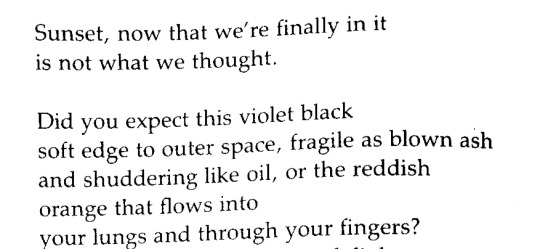
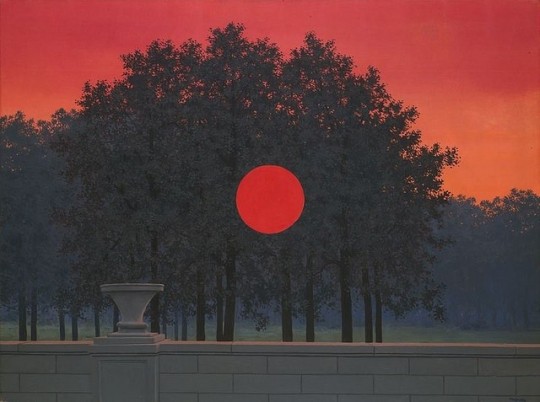





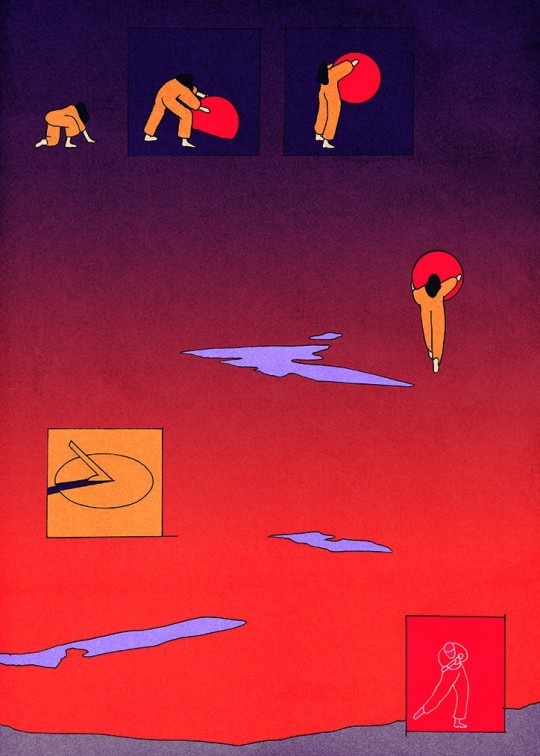
Margaret Atwood, from “Sunset II” / René Magritte, The Banquet / Mary Oliver, from “The Sun” / Katherine Mansfield, from The Diaries of Katherine Mansfield / (Source) / (Source) / Sappho (trans. Anne Carson), from If Not Winter: Fragments of Sappho / Art by @mariamedem
#looking for attribution for the 2 photos took two hours & i’m not even sure i did it right#sun#red sun#margaret atwood#sunset ii#rene magritte#the banquet#mary oliver#the sun#katherine mansfield#sappho#if not winter#anne carson#maria medem#photography#art#poetry#parallels#♥️☀️
2K notes
·
View notes
Photo
She stands in front of him because she's shorter. If she stood behind him, her face would be blocked by his shoulders. This is what happens in any photo where they try to fit multiple subjects into a narrow frame. There are thousands of pictures of higher-ranking royals standing behind junior ones:










1) Prince George standing in front of Queen Elizabeth II
2)Princess Elizabeth standing in front of King George VI, with Princess Anne in front of her
3) Queen Elizabeth standing in front of her husband, King George VI
4) Princess Charlotte and Prince George standing in front of the Duke and Duchess of Cambridge
5) Prince George standing in front of the Prince of Wales
6) Mia Tindall standing in front of Lady Louise Windsor
7) Prince Charles and Princess Anne standing in front of Queen Elizabeth II
8) Princess Margaret standing in front of King George VI
9) Princess Elizabeth standing in front of King George VI
10) Queen Elizabeth nearly completely obscuring the head of King George VI
This is photography 101, not a conspiracy.

“Why is it that in every photo meghan is standing in front of Harry? This is not feminism, progressive or modern, it just highlights that they are not an equal partnership and one thinks they are more superior than the other” - Submitted by Anonymous
“Harry might as well get a tattoo saying WHIPPED spread all over his body. Because it’s not obvious enough to miss.” - Submitted by Anonymous
33 notes
·
View notes